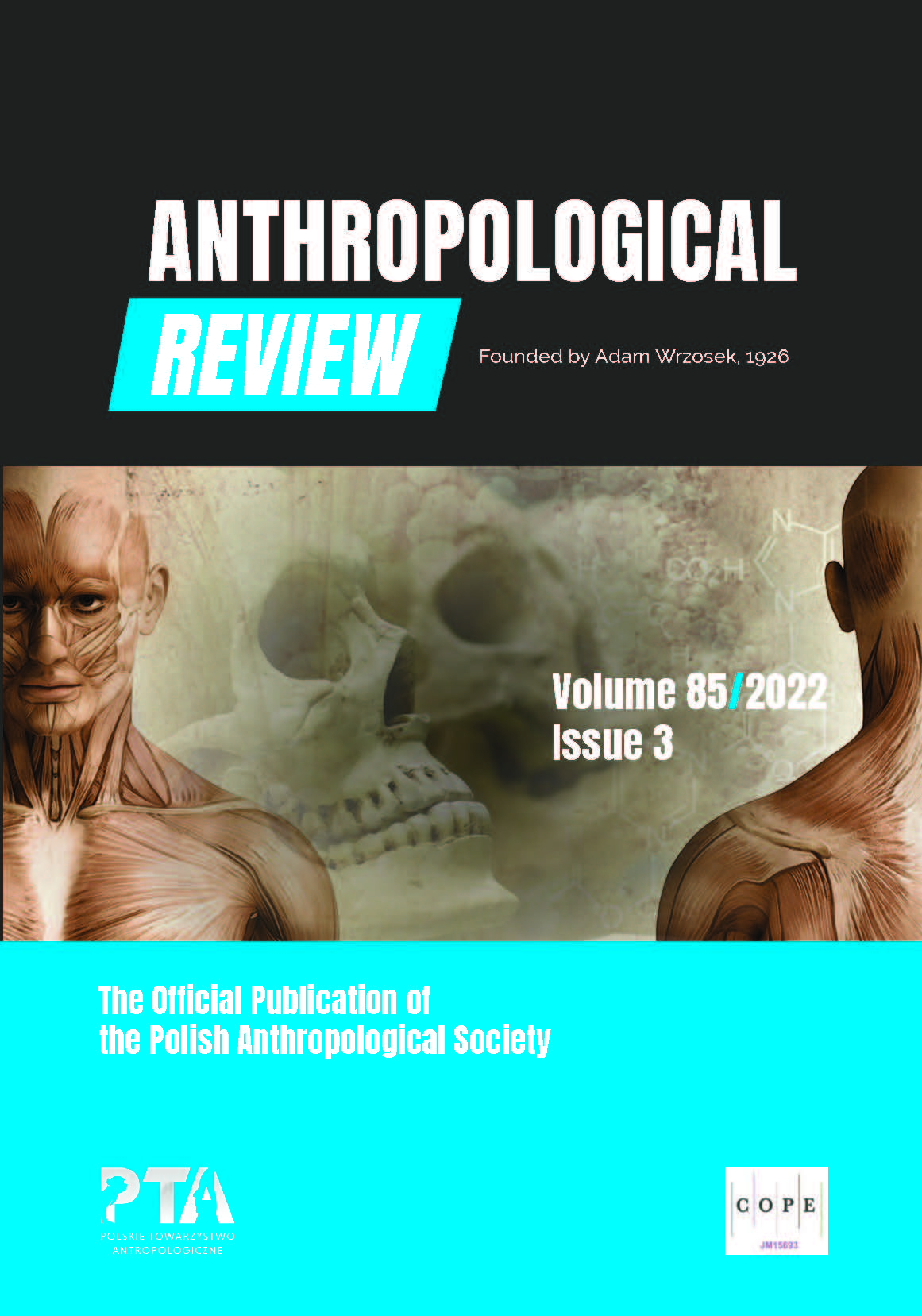Mandibular canal and the arrangement of the neurovascular bundle exit routes in divergent populations
Mandibular canal and the arrangement of the neurovascular bundle exit routes in divergent populations
Author(s): Agnieszka Tomaszewska, Daniel Psonak, Joanna RudzkaSubject(s): Anthropology, Social Sciences
Published by: Wydawnictwo Uniwersytetu Łódzkiego
Keywords: cranial openings; mental foramen; mandibular foramen; canal mandible
Summary/Abstract: Aim: In face anatomy and surgery, variation in the presence, number, location, and size of the mental foramen is discussed. Knowledge of the location of the mental foramen canal, which may led due to the possibility of accidental injury of the neurovascular bundle passing through this canal may lead to anesthesia. This study aimed to present selected anatomical features of human mandibles, focusing on the morphology of the mandibular canal and its neurovascular bundle exit in populations with different socio-economic status. Material and methods: Selected well preserved and unharmed human skulls (N= 169) (50.3% males, 49.7% females) from two populations (rural and outskirts) from Poland were used. Populations differed in socioeconomic statuses. Results: Obvious dimorphic differences in each analyzed population were stated and inter-population differences were observed as well. In an outskirt population sexual dimorphism was more evident. Those differences should be considered when approaching the mandibular canal during anesthetic, surgical and forensic procedures. Discussion: The occurrence of the mental foramen is relatively constant, but location is variable, and thus, each individual may exhibit a different arrangement of bundle exits. Both the position and the direction of the exit of the neurovascular bundle were similar to other European population. However, differences in localization between those two investigated populations were observed. This may suggest that not only genetic but also environmental factors, such as living conditions and diet (which affects developmental stability), may influence the morphology of the mandibular features.
Journal: Anthropological Review
- Issue Year: 85/2022
- Issue No: 3
- Page Range: 1-18
- Page Count: 18
- Language: English

